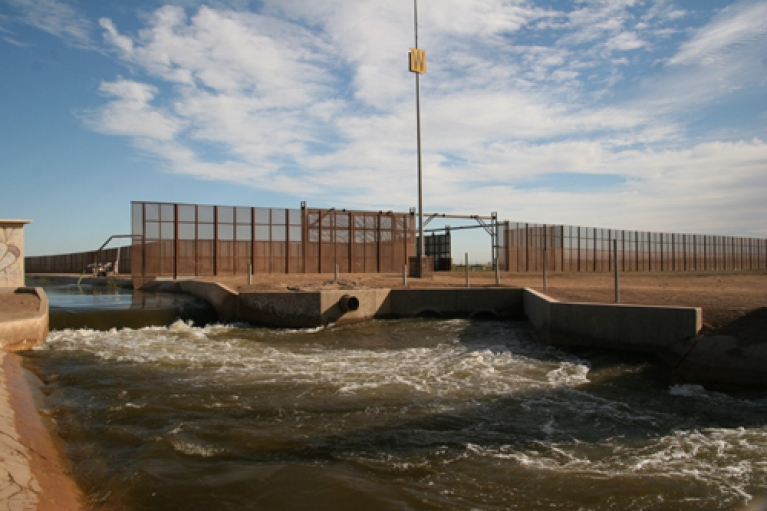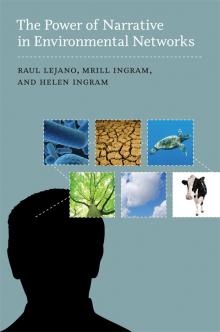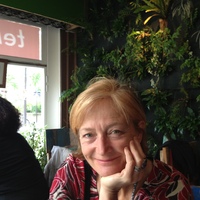Next up in our “Slargon” series – the intersection of slang and jargon – is storytelling. The story of climate change is more and more often told through a personal story to explain world-wide situations.
The social media of our time is helping these stories surface. We welcome Mrill Ingram, who has used her talents to break down jargon into clear, compelling narratives. Ingram received her PhD in Geography from the University of Arizona and has spent her career communicating scientific breakthroughs through journalism. She was Editor of the journal, “Ecological Restoration” for the University of Wisconsin Arboretum and previously worked at Upworthy, both curating and creating environmental content for social media. In August, Mrill accepted a position as Web Editor for Progressive Magazine. We welcome her insights about the power of a clear story to get a technical point understood.
_______
How did you first get involved in environmental communications?
I began writing about the environment working for Earthwatch magazine in the 1980s. The organization supported scientific field research, much of which focused on environmental issues. I learned how dynamic scientific and environmental issues can be — there’s always more questions and plenty of uncertainty and mystery. I thought a lot about what kinds of language would connect nonscientists in with a story that only scientists were telling.
With regard to climate change science, how important is language in forming a compelling narrative for combating climate change?
People as diverse as Republican political strategist Frank Luntz, and linguist and author George Lakoff have pointed out that language is foundational to our understanding of the world, and shapes what we think of as truth. That is, language isn’t just a way to communicate, it actually shapes what we are able to know and learn.
So, the short answer to your question is: Very Important.
But to elaborate, up until very recently, the narrative of climate change has been largely scientific: ice cores, tree rings, icebergs, hurricanes, and atmospheric gases have been major characters. It’s also been politically really dry – Naomi Klein describes the political discussions about climate change as “bloodless.” We hear words like “emissions” and “treaties” and “carbon trading,” even though what’s at stake are people’s entire homelands, slowly disappearing under the waves, families having to pull up roots and migrate, farmers losing land held in their families for generations, and a lot of other really heart-wrenching stories. Pope Francis, who came out with an encyclical on climate change this spring, understands this. He talks about the earth as a “sister” and “beautiful mother.” But more recently we’ve heard more personal narratives of first hand experiences of struggle and loss because of climate change. Those kinds of narratives generate emotions. They can feel familiar and compelling, and are more easily remembered and shared. These stories have also been elaborated by images thanks to social media, and also by numbers (statistics on lives and dollars lost). All this comes together to create a much more lively and compelling set of climate change narratives, that has really changed the level of public attention and receptivity to the issue.
In your 2013 book, The Power of Narrative in Environmental Networks, you argue that narrative and stories play a key role in the formation of environmental networks. How so?
In our book we describe ways that grassroots groups have organized around issues they are passionate about, and can end up having a strong impact on policy even though they are real outsiders to the political system. We illustrate with 3 case studies including a scattering of groups organizing along the Mexican-American border to protect the environment, and also farmers interested in organic and other alternative forms of farming in this country who got organized way before the surge of public interest in organic agriculture in the 1990s.
The argument of the book is that groups of very diverse sets of people with a lot of different kinds of politics, values, and experiences can form very durable networks around environmental issues – and what connects all these diverse people and the environment together is a common story. These stories, which are general narratives told slightly differently by each person, pull people together, help sustain them over both time and also geographical distance. Even after decades of being marginalized and sidelined, these groups can stay connected and work to cause real change. For example, organic farmers were routinely ridiculed after they began to network with each other and to form groups sharing information and practices. The movement involved a lot of different kinds of farmers and other people, but they all told their own versions of what they were doing to connect farming to nature, and to learn from nature about effective farming practice. Over time, these practices became celebrated as a viable alternative to industrial agriculture’s heavy reliance on chemicals.
While you were researching this issue, what were some of the findings? Were there any surprises in what you discovered?
Even while the U.S.-Mexico border has becoming increasingly militarized and portrayed as a place of danger and violence, and a massive steel wall has been built (cutting migration routes for jaguars, wolves, Sonoran pronghorn and many other animals), the people in this network have continued to express a positive attitude. U.S. laws protecting the environment have been completely disregarded by military efforts to “protect” the border. But rather than give up, people in these groups are seeing ways that the border wall can help increase public awareness of all the wildlife and other natural wonders of the region. People from Mexico, the U.S., and from tribal nations all describe the Sonoran region as a place of home or one of arrival, they felt strongly that this was a place they had to commit to. And that shared sense of the special nature of this place has kept them working together to protect it, even while the general attitude has shifted toward one of fear and suspicion. And they have accomplished some pretty impressive policy changes lately, for example, protecting wetlands, jaguars, and releasing water in a portion of the Colorado River that has been dry for decades in order to help the environment.

Cross-border politics: Water destined for the Cienega wetland flows into Mexico through a gap in the border fence at San Luis Rio Colorado. Credit: Lorne Matalon
What is the most significant element a community needs to create a strong network and support itself as an environmental community?
As I mentioned, we saw a shared story as the single most important element, a story that connected people emotionally as well as intellectually. One key piece of every story, though, was how people understood their opposition. Groups really need a common enemy, or at least a commonly articulated opposition that they can organize themselves against. One of the big challenges about the scientific climate change narrative as it’s often told, is that the common enemy is us. Everything we do contributes to global climate change, and it’s hard to see what action to take, let alone why getting organized in a group would do any good.
We also saw that some kind of personal interaction and environmental experience is really critical. Social media, where people can see pictures and hear people talking or singing, for example, is really important. But it alone isn’t enough to sustain a long-term commitment and understanding about the environment. People need to see and talk with other people in the flesh, and to personally interact with the wonderful, diverse world around.
 How heavily did the use of language – particularly slang and jargon related to climate change – factor in to your conclusions?
How heavily did the use of language – particularly slang and jargon related to climate change – factor in to your conclusions?
All groups we looked at developed their own slargon over time. It is an important way of gesturing to a common experience, or set of conclusions, for example. Insider language can also be off-putting for newcomers, of course, and given that we were looking at groups interested in broader societal change, rather than protecting themselves from intrusion, we didn’t see strong commitments to special language that others wouldn’t understand.
Of course, a lot of environmental discourse can be very jargony. But what we saw with the networks and shared stories, was that whether they used jargon or not, everyone was telling a similar kind of story. So scientists, ranchers and government agency representatives alike, they were all active narrators, not just sitting back and only listening. And people frequently incorporated both very personal and emotional information with very technical, scientific information. Stories are a tremendously powerful way of pulling these very different ways of understanding together.
It’s really empowering for someone to tell a story, and to share that with others who recognize it as a similar story. If more individuals began to narrate their own personal stories about climate change and listen to other people tell theirs, it would really help inform the climate change discussion with passion and urgency.
As a curator on Upworthy, you write content that promotes environmental stewardship and community networking. How has social media influenced climate change communications?
I mentioned this before, but I think social media has been a driving force in creating new stories of what climate change actually means for individual lives. It’s helped personalize and make emotional what’s been a pretty technical, bloodless discussion. I really like the Instagram account everydayclimatechange. Powerful stuff. But besides sharing photos from far away places of hardship, social media is also a place all kinds of people participate, no matter their expertise, and they can also share in a celebratory manner. And being able to share inspiration about the environment, and to hear from others about their inspiration — well, that’s the beginning of a shared story about how something really matters.
Does your use of less-formal publishing through social media influence your choice of words?
Totally!
Do you use more slang and jargon than technical phrasing to frame an issue when writing a tweet or an Upworthy article?
I think slang and jargon both can be incredible effective, particularly if you are speaking to a selected audience, one that is already familiar with the context and will understand what the terms refer to. Slang can be humorous. Jargon is great for short cuts. Both those things are really nice to be able to use. But so much of my writing is aimed at engaging new audiences, and trying to catch and hold the attention of non-specialists. Jargon ain’t great for that.
Also, I work to bridge gaps – so not just communicating science to nonscientists, but also communicating something personal, or emotional, to a scientific/specialist audience. Again, that’s what I appreciate about social media. People are participating there, and very often, they are sharing their feelings.
As an environmental communicator on the forefront of social media content, how do you think climate change communicators can improve their message and increase public understanding?
I think it’s important to see the world not as scientist/non-scientist but a world full of groups with very different kinds of knowledges. In other words, I can think of most everyone as an expert, but in different things. So communicating with them involves recognizing their expertise and tapping into that in some way to find something that resonates and will open them up to some new ideas. My writing is a constant, roving exploration of what kinds of information or framing of a story will help do that resonating. Once you create that possibility then people will avail themselves of all kinds of technical info, whether it’s jargony or not. They just need the compelling reason to do it.
I just encountered this on social media about climate change, a poem from a girl living on islands endangered by sea level rise:
..tell them we are skies uncluttered
majestic in their sweeping landscape
we are the oceans
terrifying and regal in its power
tell them about the water
how we have seen it rising
flooding across our cemeteries
gushing over our sea walls
and crashing against our homes
tell them what it’s like
to see the entire ocean level with the land
tell them
we are afraid
tell them we don’t know
of the politics
or the science
but tell them we see
what is in our own backyard
but most importantly
tell them
we don’t want to leave
we’ve never wanted to leave
and that we
are nothing
without our islands
Excerpt from “Tell Them”, a poem by Marshallese poet and activist, Kathy Jetnil-Kijiner (@iepjeltok).



Recent Comments